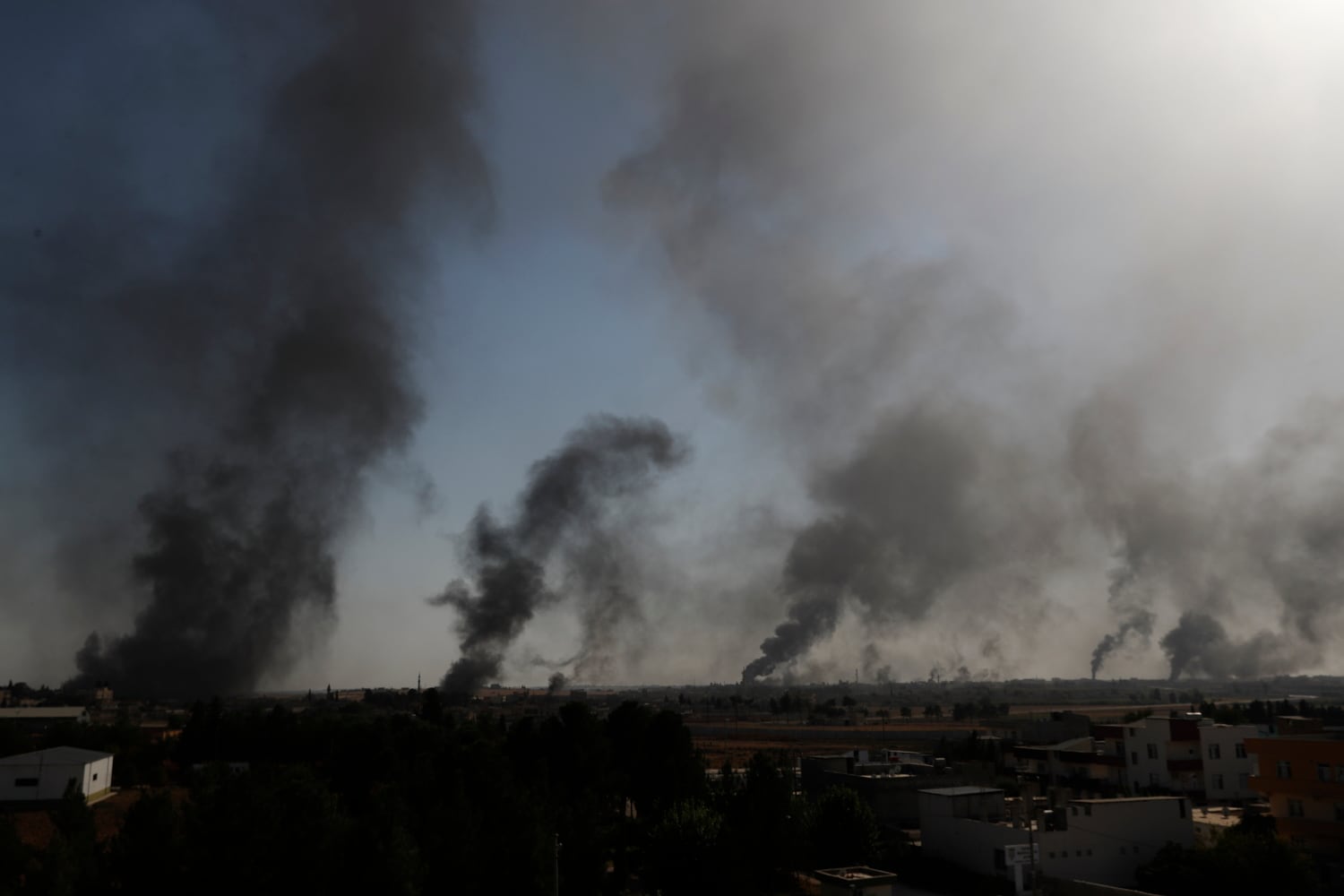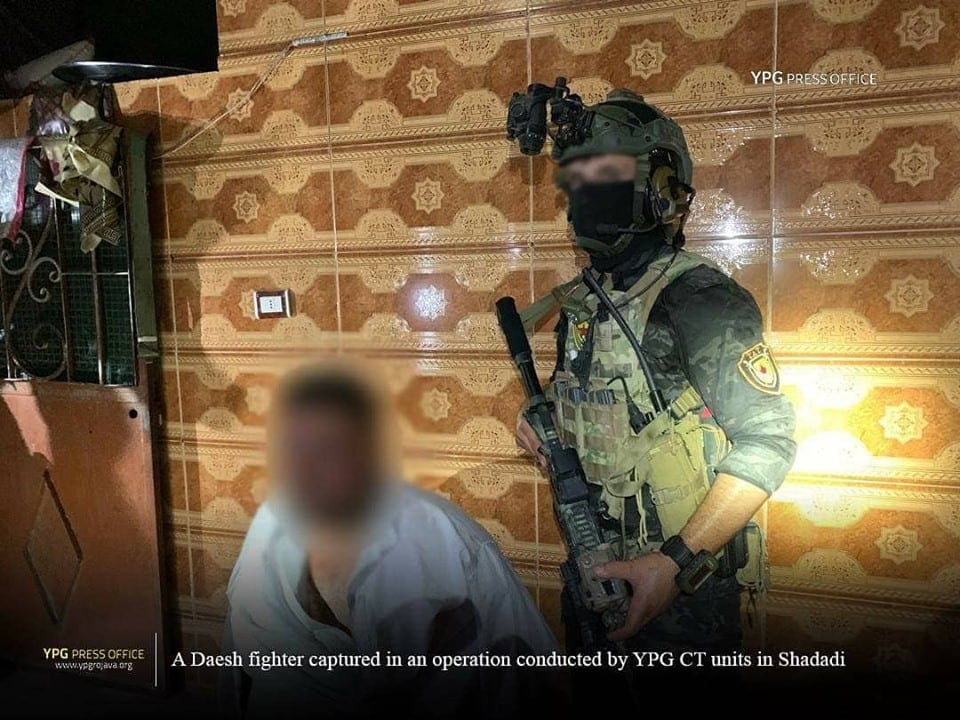U.S.-backed Kurdish forces in Syria claim a Turkish air strike targeted a training camp housing a secretive coalition-trained commando force.
Turkish forces launched an operation to clear Kurdish militants from northern Syria on Wednesday following the withdrawal of a small number of U.S. special operations forces from the area.
The Syrian Democratic Forces press office on Thursday Tweeted out pictures it claimed were of the bombed out training camp.
The SDF claim the camp housed members of the Yekineyen Anti-terror, or YAT — an anti-ISIS commando force that the SDF says “operates alongside” U.S. forces and the coalition.
Photos posted by the SDF and YPG press offices have often depicted the anti-ISIS counterterror force brandishing American weapons, optics and night vision devices associated with other U.S.-trained commando partner forces across the Middle East.
The Pentagon has not acknowledged training or providing night vision tech to the YAT, and questions posed by Military Times to the Defense Department and Operation Inherent Resolve regarding the bombed commando camp and coalition assistance to the unit have yet to be answered.
The group is controversial due to its affiliation to the People’s Protection Units, or YPG, a Kurdish militant group that operates under the larger SDF banner.
Turkey has long complained to the U.S. of the YPG’s affiliation to the internationally designated terrorist group known as the Kurdistan Workers’ Party or PKK.
But the SDF says Turkey is now targeting the very forces tasked with taking out ISIS sleeper cells. On Saturday, a YAT unit captured ISIS commander Shafaq al-Hachim, according to the SDF press office.
Destroying the commando unit could further jeopardize anti-ISIS operations and allow the jihadi group to reemerge and mobilize larger forces on the battlefield.
RELATED

“YPG provides no free-ground for any terrorists in Northern Syria, including ISIS sleeper-cells which have been heavily targeted by the YPG Counter Terrorism Units since the battle in Baghouz,” the YPG press office said about the YAT.
A recent DoD inspector general report warned of resurgent ISIS cells in Syria.
“ISIS has established “resurgent cells” in areas controlled by Syrian partner forces,” Glenn A. Fine, the lead inspector general for the DoD, said in the report.
“While Syrian forces carried out clearance operations in northeastern Syria to eliminate these cells, CJTF-OIR [Combined Joint Task Force – Operation Inherent Resolve] reported that U.S.-backed Syrian forces also have limited capacity to hold liberated areas,” Fine said.
The U.S. decision to arm the SDF and YPG in the fight to liberate northeastern Syria from ISIS has created a rift between Washington D.C. and its NATO ally in Ankara.
As weapons and equipment flowed to Kurdish fighters plowing through ISIS held territory, the Pentagon was relatively transparent about its assistance to its partner force in an attempt to allay Turkish concerns about Kurdish fighters receiving anti-tank missile systems or other high-end technology.
In 2017, a spokesperson for U.S. Special Operations Command confirmed to Military Times that some vetted Syrian partner forces were receiving ELCAN rifle optics, EOTech holographic sights and the AN/PEQ 5 visible lasers.
While the U.S. military has not confirmed supplying night vision tech or optics to the YAT, a fiscal year 2018 DoD budget request for training and equipping Syrian partner forces includes funds for older generation night vision devices and laser sights, or designators.

The budget document requested $381,300 for 150 older generation PV7-D night vision goggles, and 150 PEQ2A laser sights to the tune of $146,250.
Turkish President Recep Tayyip Erdoğan on Wednesday announced the start of Operation Peace Spring to rout out Kurdish militants from northern Syria and the establishment of a safe zone for the resettlement of Syrian refugees.
The Turkish military operations, now in their second day, have drawn international condemnation. SDF positions in northern Syria have been hit with Turkish aerial and artillery bombardments.
The U.S.-backed fighters claimed a number of strikes had killed and wounded civilians. Videos and pictures of Turkey-backed Free Syrian Army, or FSA fighters moving into northern Syria to attack SDF forces were plastered all over social media Thursday.
The SDF claimed it had repelled some attacks and destroyed several vehicles near the border.
Shawn Snow is the senior reporter for Marine Corps Times and a Marine Corps veteran.









